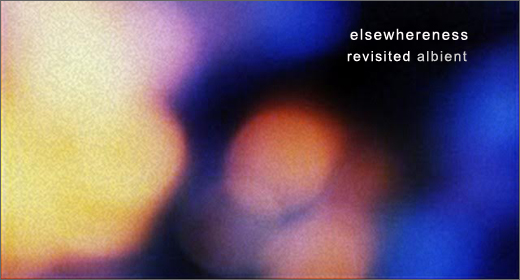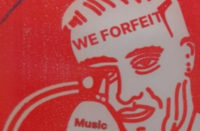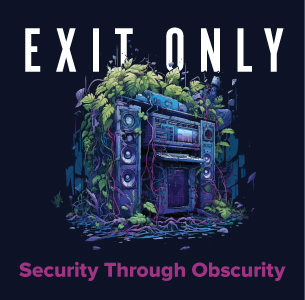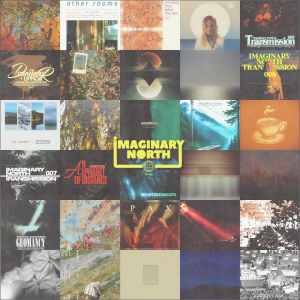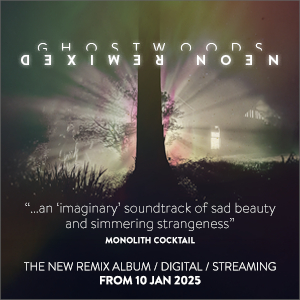Elsewhereness revisited is an occasional feature documenting the drift at the margins: ambient gasbagging and blurb blather, ’tube-d, ’cloud-ed, ‘n’ ’camp-ed up, complete with companion mix, Elsewhereness revisited #11.
Dense textural tracts crafted with processed guitar, mining a vein of inquiry into sound perception, the interplay of time and space and the emotions induced. That’s Sublamp. Ambient since 2005 by appointment to such as eilean, Hibernate, and Dragon’s Eye, host of Sister Maps, his first in nearly a decade, Ryan Connor, engaged as a sound designer on a live TV show over a 3-week tour of 19 cities was prompted to muse on our understanding of place—its limitations when experiencing only fleeting glimpses of it. Each track covers the same duration, as if simultaneously captured in six places across an imaginary city; subtly influencing each other, some sounds seep in between, intersecting, flowing seamlessly into one another with parallel placement. It makes for altered listening, like meandering through an unfamiliar city with only personal experience available to make sense of it. A city is not linear, as map is not territory, showing only a delineated space, not what occurs within. Elsewhere something is always going on, paralleling your experience.
Another perceptual explorer, Yann Novak, seeks to heighten audience awareness of the moment via context and movement and construction of immersive spaces. Taking the scalar field as a framework to experiment with time-based works not experienced time-dependently, the Dragon’s Eye head sought to explore slowing down video to the point where change is imperceptible to create sound with no attack or decay, only sustain; his intent was production of a time-based piece to be experienced more like a static object like a painting or sculpture, gaining meaning via prolonged observation, to see what transpired from audience agency over experience. With the series’ progression the concept drifted further from the eponymous frame’s formal association with Maths/Physics, taking on a life of its own. Two installations, Scalar Field (f9bf3b, fde3a7 , 4183d7, 1f3a93 – or: yellow, blue, yellow), shown in LA (2016) and Scalar Field (f89406, f2784b, f64747, f62459 – or orange, pink, orange), from Foligno’s Dancity Festival (2015), are documented on Scalar Fields, their gradual evolutions barely perceptible, though compare-contrast of ends-beginnings is revealing.
Moody Manc Sangam, author of ‘ambient portraits of social dysfunction, depression and heartbreak’ (The Wire)—as seen in previous ERs, colludes with London’s Bruised Skies for Division (Asura Revolver), leaving behind their Dream Catalogue entries (You Forget This, Remnants) for a trawl through years of material. Elsewhere Matt Heywood re-finds Tim Garratt’s Moon Zero to revive Inchindown—a joint venture with a fine s-t LP last year—for a side of 015/016 – Inchindown & Specimens, on DISPLAY, sub-label of the Kid Smpl-owned Symbols. The commonality of this split is encrypted in the comment that they ‘come from a long lineage of London artists delving into the promise and disappointment of an expansive urban environment.’ Overall, mood and timbre are explored in micro detail, each piece acting as ‘a portal between internal and external worlds, managing affective inputs and outputs with deep intimacy.’ Inchindown wrestles with noise and high aura’d melodic motifs in an enveloping sound field on “Window,” while Specimens infuses grandiose mood with particulate detail on “Jet Streams”, pillowed contours pricked with feedback, washed with soft waves. Both by turns congeal and distort, foreground and distort.
Andrew Tasselmyer in the house—or rather the field; explorer of ‘”audible nostalgia”‘ or ‘the relationship between sound, memory, and place,’ using sound to express the connection he feels to specific places, mixing found sound and re-purposed field recordings with harmony. With his latest ‘soundtrack to specific, ordinary experiences that somehow became permanently lodged in my memory of those places,’ Surface Textures (eilean), he seeks, so to speak, to sing unsung corners of the world, with a reminder that ‘sometimes the greatest satisfaction is found by looking past the immediate and into the peripheral textures of a place.’ Elsewhere his Hotel Neon—with brother Michael and Steven Kemner—has a new release on Archives. Vanishing Forms‘ textures ‘have meat on their bones, becoming massive, intangible structures, but […] vulnerability at their core….’ (good spot, Fluid Radio).
Previously seen on eilean and Fluid Audio, Moss Covered Technology is hosted here by Hibernate for an update of his organic atmospherics. Southern Points is trailed by Greig Baird as an ‘intensely introspective personal album’, a trope that, frankly, always tends to induce queasiness—a squirm further compounded by mention of ‘focusing on family and home life.’ Qualms swiftly dispelled on entry, though, as suggestive texture and harmony via Prophet 12 and processed field finds mix with an array of FX, and accompanying cover image taken near one of the eponymous inspirations, Seatown, Dorset, provide transport to your own head cinema.
On We Can Sleep Now Endurance wrangles a twisty tangle of synths, tapes and processing to set off a stream of tonal replicants with alien timbres and consonant clusters for Cleveland’s Unifactor. Japan-based Joshua Stefane choreographs a series of deleted scenes and forgotten dreams, limned with occluded electronic fragments and esoteric effluvia blurred into a compelling whole. A spirit of isolation runs through it, materials layered from shade to shimmer—part glassine fog through which things are seen darkly, part narcotic rug huddled under for warmth.
Benoît Pioulard and Sean Curtis Patrick collude on Avocationals for Beacon Sound. Synths, guitar, reel-to-reel tape, field recordings, and processed vox conjure up ghosts of Great Lakes shipwrecks. An avocational is an amateur diver assisting in rescue, investigation and salvage relating to watercraft disasters, thousands occurring in the mid-20th c. golden age of Great Lakes shipping, nine providing for this set. Nature and decay are woven into these pieces, as Thomas Meluch continues documentation of a dialog with guitar, voice, and frayed fidelity. Patrick perhaps brings a visual sensibility (cf. videos for such as Alessandro Cortini, Kaitlyn Aurelia Smith, Richard Devine, Rafael Anton Irisarri, as well as Pioulard, and an OST for a documentary on the hurricane-borne devastation of Puerto Rico). It’s wintry, with a narcotic hum, evoking ‘not only a distant past but also something of what may lay ahead.’ While we’re at it, Pioulard’s Disques d’Honoré, hitherto a platform only for himself, has a new release, this from VIUL, one Luke Entelis, whose only previous work, Summer’s Wet Work is Done (Moodgadget, 2009), dates back a decade. Bright Decline lies in a bleached-out zone between The Caretaker’s queasy wooze and some sunnier polaroid-rendered area, well captured by RAI at Black Knoll Studio.
Next, artists first seen on A C R, now elsewhere: HRNS‘s Naomi on Warm Winters Ltd. flickers fragilely between vulnerable and secure, between presence and absence—music for ‘contemplative, tired moments, when the immensity of space seems most striking.’ Portuguese Rui P. Andrade and Farwarmth mine the elemental, patiently presenting ‘a darkly glowing ambient delight…(which) offers sparkling meditations that shimmer like newly cracked geodes, dense and beautiful all at once.’ And José Soberanes (Shimmering Moods, Faint, ETER, A C R too) with The Garden Reveals Itself, hosted by Mexico’s Transvection Ltd., renders various forms of synthesis—granular, modal, additive, wavetable, sound-edition protocols through a processing prism with random field captures primed to tap into quotidian experience over utopian landscape. ‘’There is no place where the vibration does not wander, nor time when the whispers do not dissolve. A concatenation still persists, a tireless continuum created by echoes of echoes; from micro to macro, from grain to texture. Invisibly, time weaves the listener as an experience not of solitary sounds and fixed points, but universes of transitory silhouettes reunited in unique union and transmutation; resonance.’ Everybody say yay, José.
Causeyoufair‘s debut, There I Lay And Time Imperfections (Audiomoves, 2009) brought comparisons to SotL and Basinski for Istanbul’s Yigit Demirel for meticulous concentration on ‘sublime beauty, delicacy and grace.’ While not disposed to believe the hype of ‘Each musical notation is an exquisite expression which focuses on space tied to emotional resonance,’ we may accept that ‘The end result is work that supports the listener to become immersed accessing hidden memories and nostalgia.’ A decade on In Blue On A Vaporous Sky is touted by Audiobulb for its ‘focus on an acoustic space designed to enable meditation and introspective healing.’ Those weary of the metastasis of Nu Age Speak may prefer ‘Between notes, reverb and silence each moment is allowed to be, fade and disappear. The choices of notes catch you when you let yourself go deep into the experience.’
Fourth in James Murray‘s Slowcraft Presents series, Impermanence, speaks of transience and fragility via the analog machines Ian Hawgood deploys to articulate the brittle beauty of decay. After years of mastering, label curation and collaboration he offers a portrait of the expertise and integrity involved in contemporary tape-based practice. Banks of reel-to-reels, analogue synths, and degraded cassettes had hiss, wow and flutter carefully coaxed into nine pieces of unpredictable delicacy. Understated, finely wrought, work honoring process and outcome with tonal and conceptual elegance. With Home Normal head hat on, ‘warm analog sleep’ is Hawgood’s description of anthéne‘s recent Weightless, a set of minimal drift works wrought from effected guitar, synth and field recordings pillowed with tape saturation, a similar sound quality brought to asymmetry (igloo-‘view here), another lot of lulling loops infused with comfy hiss. Brad Deschamps has ranged across Hibernate, Sound In Silence, and his own Polar Seas, with Whitelabrecs doing the honors here. The title alludes to different ways of recording to create narrow saturated pieces as well as widescreen ambience, while seeking to blend them as a cohesive whole—a mission well accomplished here.
Shimmering Moods never sleeps, as further evidenced by a seven-album Feb-March period. February: James A. McDermid‘s In Little Swallows brings large mouthfuls of subaquatic and aerial ambience, like a mix of TD and SAW-era Aphex, according to one review (Fluid Radio). The jury here is not so much out as hung, though initial ear’olings indicate some suggestive elsewhereness to be revisited. Over to The Shores of Valhalla, where we find a musical articulation of the experience of haunting nights picked up when Glasgow’s Projektions pitched up on Arran, Scotland over two visits in a cave adjoined to another that had been used as a place of worship. Long-form centrepiece, “Daersinium Lopus,” moves from the industrial (meshy, metallic drones) to the emotional (sudden piano recital), slowly merging endwards, repeating this blend and overlap, each iteration slightly more fused with just the right dramatic pause. A more compact mature Federico Mosconi appears on Light not Light, influenced perhaps by collaboration with KrysaliSound capo, Francis M.Gri. Finger-picked classical guitar, layers of amniotic noise transformed by electronics and traces of field recordings, as if to preserve a link with the original source. It explores the concept of differing signification for the same signifier, the guitar and noise duality artfully assisting in creating that ambi(val)ence.
March: PJS‘s In Between, created live without presets or ‘puters by Patrick Dique and Jordan Christoff (see CT below), is billed: ‘In between thoughts reflecting intersections of spirit, psyche and body. Transmuting form and feeling multiverse union via sound and friendship. The blessing of life providing healing and access to ancestral celestial harmony.’ Alas, Andrii Hrachov and Iryna Bodnar pile on the piffle for Bad News from Cosmos‘s Blue Jelly Island: ‘Cold and chill November days pushed us to record some nonverbal dialogue between us two and this dialogue is about our fancy vaporous ideas of distant warmer lands. Nothing goes right in a dream, the scenery is weird and it’s melting, but it’s where we felt great and invincible. The music was just floating as we were playing so as if we were in a state of superposition…’ Blah. Next, Pachira Aquatica, ‘a miraculous offering of improvised order,’ ‘a collaboration with chance’ and ‘an expedition into the thresholds of uncertainty where certainty crystallizes into living universes.’ (mhm, one of those blurbs); more pertinently, T. Gowdy offers ‘sonorous journal entries exploiting limitations such as feedback, FM/buchla synthesis, cathode ray-tube TV electro-acoustics as well as Motorola G-series smartphone analog to digital converters.’ Last, Nothing Shapes Everything comes from An On Bast, ‘trying to investigate reality with a feeling of being inside the unseen, being part of dark matter or a metaphysical negativity of existence that has or may have (maybe even a decisive) impact on what is. My subjective experience of imaginary processes happening in the alternative worlds….’ End of flaky poesis synopsis.
Constellation Tatsu see out the coldest season with their usual Winter batch. Curved Light with Flow And Return, a set of psychedelic micro-synth-phonies made with hardware synths, loopers, and vintage effects machines. Denser than his previous, laced with a refresh of melodic motifs and a neon undercurrent of 21st c. dread. Peter Tran ranges wide and free, serene soundscapes punctuated by more swiftly sequenced pieces, as bassline bubble and synth squeak rub up against little fluffy clouds. “Colorform” taps into early ’70s Kosmische, “Non-Volatile” into fellow-dwellers, Suzanne Ciani, Kaitlyn Aurelia Smith, and Steve Hauschildt. Simmering moogs! Jordan Christoff’s Enveloped is a debut ‘presenting a universal sound, that is both cosmic and also drawn from the living oceans on this earth.’ Dandy. He paints sonic landscapes with his synths, no computer screens, but a full acoustic world drawing from ambient sonic landscapes, ‘also committed to honouring the roots, inspired by composers like Eduard Artemyev and the sounds of Le Mystère des Voix Bulgares.’
Chris Otchy‘s first CT release is billed as a vivid exploration of the natural world weaving serene synth vignettes with denser more industrial technoid material. Inspired by ’60s-era National Geographic maps of the ocean floor, Subterranean Landscapes sees avid sailor and diver Otchy seeking to fuse the quiet beauty of those 2D depictions with the power of real-life oceans, deftly mixing modular synths with field recordings, textured noise, and processed guitar. References to ‘the whimsy of Mouse on Mars, the psychedelia of early TD and the melodic, neo-stoner groove of Campfire Headphase-era Boards of Canada’ are just about there if you screw your aural eyes up, esp. on “Out of Reach” and “Driftwood Collage.” Last, Rose pursues inner archaeology of some ambivalent territory on Night Places. Reuben Sawyer‘s robotic beats lean toward minimal goth techno a la Ministry or MBM at times. Elsewhere intricately layered textures bubble more upward, as on “The Searing,” deriving resonance from a tension between the light of synth wash, the shade of noise treatments and deep sunken grooves.
How To Disappear Completely is back with a coda to their sleep music project, Mer de Revs, (regularly visited in ER), whose first volume contained the track “Seraphim II” that gives it its name. Seraphim‘s material was composed and recorded by the Polish collective over the two years of the aforementioned Sea Dreams sessions, yielding nigh on two hours of music. ‘A study in deliberately soothing textures designed to give the listener space to find stillness and collapse into rest – late night lullabies.’ Mer de Revs Sessions (2017-2019) were recorded live to 2-inch tape, with Yamaha DX7, tape loops, processed/reprocessed guitars, found sounds, voice and loads of heavily worn out old VHS tapes, all perceived silence and audio deformations being entirely intended.
Ulla Straus, best known for her bit on cultish comp tape, bblisss, diffuses gauzy ambience through Big Room for Quiet Time Tapes in the wake of episodes from Kareem Lotfy, Debit, and Huerco S., each piece a gaseous harmonico-spatial ethnography; cf. “Nana,” a slow-swirling loop lapping at a digital shore, or “Sister,” whose melodic meander is smudged similarly single-mindedly across its length (cf. Huerco S.’s For Those Of You Who Have Never), or “House”‘s languid chimes and pads, or “Past,” punctuated with pops, clicks and whirrs backed by a subtle cascade of keys. At times reaching vanishing points and vertiginous hangs, it’s lowercase with a pop twist.
Final frontier: The new Maps & Diagrams, Azurescens, pairs friends and musical associates, Tim Diagram and Yair Etziony, for a split-label release on their respective Handstitched* and False Industries imprints. Steeped in deeper acoustic inquiry than previous, while retaining a familiarity of feeling, a sense of periodic spiraling out of control cedes to re-finding of equanimity and tangibility. Rime Trails self-issues the Basinskian Dusk Embers, following on his Perigee, cementing tone set by it and label-head Forest Management’s Remain for Afterhours; here we also find Convalescence from Evergreen Avenue, which houses Vermont’s Alec Critten, whose ‘patient and confident’ music, and ‘great ear for harmonics and loops’ are attested to by FM-man, John Daniel; as well as being an apt gloss on his work, the likes of Looped Meditations are extremely quiet in diverse ways, configurable to listening bent—to ‘either envelop or “air out” your space.’ His bc is stuffed with self-issues, among which Pastel Blue Excursions, another apt descriptor. Sofia’s Krasi Yonchev aka Scav brings Morphing Clouds, a first release hosted by Spain’s Faint with some fine spatial savvy, nicely mastered by Emanuele Pertoldi. ‘In a world so overflowing with soulless music it is truly an unexpected gift,’ froths KrysaliSound curator, Francis M. Gri, over Maps of Reason by Tropic of Coldness, whose Gutman and La Placa have a deal of history between the former’s Brussels and the latter’s NE Italy, plus currency on Shimmering Moods, Glacial Movements, Organic Industries, et al.. Finally, eighteen, not with a bullet, but counting, is Void XVIII, latest in the Void (nomenclatural rather than ontological) series from Chihei Hatakeyama on his White Paddy Mountain imprint.






